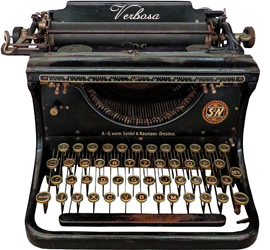Definition of Venn Diagrams
A Venn diagram is a graphic organizer that compares and contrasts two or more ideas, representing how ideas are similar and different using overlapping circles.
The definition of Venn diagrams is closely related to their ability to visually demonstrate the similarities and differences between concepts.
This strategy helps students identify the properties of each item being compared and the properties that are common to both.
Venn diagrams are used after reading a text where two or more ideas are being compared and contrasted, making them a great tool for compare and contrast lessons.
They are also used to help students understand the relationships between different ideas and to organize their thoughts and ideas in a clear and concise manner.
The use of Venn diagrams in education has been shown to be effective in improving student understanding and comprehension of complex concepts.
Venn diagrams can be used in a variety of subjects, including language arts, science, and social studies.
Overall, Venn diagrams are a powerful tool for teaching students to compare and contrast ideas and to think critically about the relationships between different concepts.
Importance of Venn Diagrams in Education
The importance of Venn diagrams in education cannot be overstated, as they provide a valuable tool for teaching students to compare and contrast ideas.
Venn diagrams help students to visually organize information, making it easier to understand and retain.
They also promote critical thinking and problem-solving skills, as students are required to analyze and evaluate the relationships between different concepts.
In addition, Venn diagrams can be used to differentiate instruction, allowing teachers to meet the needs of students with varying learning styles and abilities.
The use of Venn diagrams in education has been shown to improve student engagement and motivation, as they provide a interactive and hands-on approach to learning.
Venn diagrams can be used in a variety of educational settings, including classrooms, homeschooling, and online learning environments.
Overall, the importance of Venn diagrams in education lies in their ability to provide a powerful and flexible tool for teaching students to compare and contrast ideas, promoting critical thinking, problem-solving, and academic achievement.
Venn diagrams are a valuable resource for educators, and their use can have a significant impact on student learning outcomes.

Using Venn Diagrams to Compare and Contrast
Using Venn diagrams to compare and contrast involves reading passages and completing diagrams to identify similarities and differences with writing guidelines and downloadable resources for teachers.
Workplace Skills Used in Venn Diagram Lessons
Workplace skills used in Venn diagram lessons include critical thinking, problem-solving, and communication. These skills are essential in the workplace, where employees are often required to analyze and compare information. By using Venn diagrams, students can develop these skills in a fun and interactive way. The lessons involve reading passages, completing diagrams, and identifying similarities and differences. Students learn to evaluate information, make informed decisions, and express their thoughts clearly. The skills gained from Venn diagram lessons can be applied to various careers, such as data analysis, marketing, and education. Employers value employees who can think critically, solve problems, and communicate effectively. By incorporating Venn diagram lessons into the curriculum, educators can help students develop these essential workplace skills. The lessons are designed to be engaging and challenging, making them an excellent addition to any educational program. Overall, Venn diagram lessons provide students with a solid foundation in critical thinking, problem-solving, and communication.
Completing a Venn Diagram
Completing a Venn diagram involves several steps, including reading and understanding the passages, identifying the main ideas, and filling in the diagram. The diagram consists of two overlapping circles, where the overlapping section represents the similarities and the outer sections represent the differences. Students should list the properties of each item being compared down the sides of the diagram and the properties that are common to both in the intersection. This helps students to visually demonstrate the similarities and differences between two concepts. The Venn diagram should be completed in a way that is easy to read and understand, with clear and concise language. The diagram can be used to compare and contrast two or more ideas, making it a versatile tool for students. By following these steps, students can effectively complete a Venn diagram and develop their critical thinking and problem-solving skills. The completed diagram can then be used to write a compare and contrast essay or to participate in a class discussion.

Benefits of Venn Diagrams in Reading Comprehension
Venn diagrams improve reading comprehension by visually organizing information and identifying similarities and differences between concepts clearly and easily for students and teachers alike every day.
Identifying Similarities and Differences
Identifying similarities and differences is a crucial skill for students to develop, and Venn diagrams are an effective tool to help them achieve this. By using Venn diagrams, students can visually organize information and compare two or more concepts, identifying the similarities and differences between them. This skill is essential in reading comprehension, as it enables students to understand the relationships between different ideas and concepts. Venn diagrams consist of overlapping circles, which represent the similarities and differences between concepts. The overlapping section of the circles represents the similarities, while the non-overlapping sections represent the differences. By completing a Venn diagram, students can clearly see the similarities and differences between concepts, making it easier for them to understand and analyze the information. This skill is also useful in other subjects, such as science and social studies, where students need to compare and contrast different ideas and concepts. Overall, identifying similarities and differences using Venn diagrams is an essential skill for students to develop, and it has numerous benefits in reading comprehension and other subjects.
Graphic Organizers for Compare and Contrast Lessons
Graphic organizers are valuable tools for compare and contrast lessons, helping students to visually organize and analyze information. Venn diagrams are a popular type of graphic organizer used for compare and contrast lessons, but there are other types of graphic organizers that can be used, such as double bubble maps and Carroll diagrams. These graphic organizers provide a structured format for students to compare and contrast two or more concepts, identifying the similarities and differences between them. By using graphic organizers, teachers can help students to develop their critical thinking skills and improve their ability to analyze and evaluate information. Additionally, graphic organizers can be used to support students with different learning styles, providing a visual representation of the information that can help to clarify complex concepts. Overall, graphic organizers are a useful resource for compare and contrast lessons, providing a range of benefits for students and teachers alike, and can be easily downloaded and printed in PDF format for classroom use. They are also versatile and can be adapted to suit different subjects and topics.

Downloadable Venn Diagram Resources
Downloadable Venn diagram resources include printable PDFs with lines and without lines for compare and contrast lessons in classrooms or at home easily for teachers and homeschooling families online.
Printable Venn Diagrams in PDF Format
Printable Venn diagrams in PDF format are available for teachers and homeschooling families to download and use in classrooms or at home. These resources include Venn diagrams with lines and without lines, suitable for compare and contrast lessons. The diagrams can be easily printed and distributed to students, providing a helpful tool for visualizing similarities and differences between two concepts. By using printable Venn diagrams, students can develop their critical thinking skills and improve their ability to analyze and evaluate information. The PDF format makes it easy to access and print the diagrams, allowing teachers to quickly incorporate them into their lesson plans. Additionally, the printable Venn diagrams can be customized to fit the specific needs of the classroom or student, making them a versatile and valuable resource for teaching compare and contrast skills. Overall, printable Venn diagrams in PDF format are a convenient and effective way to support student learning and development.
Other Graphic Organizers for Compare and Contrast
Other graphic organizers for compare and contrast include double bubble maps, Carroll diagrams, and concept maps. These tools can be used in conjunction with Venn diagrams to provide students with a variety of ways to visualize and organize information. Double bubble maps are similar to Venn diagrams, but they allow for the comparison of multiple concepts. Carroll diagrams, on the other hand, use a table-like structure to compare and contrast information. Concept maps are a more flexible tool, allowing students to create a visual representation of relationships between ideas. These graphic organizers can be used to support a range of learning activities, from reading comprehension to writing and critical thinking. By providing students with a range of tools, teachers can help them develop their critical thinking skills and improve their ability to analyze and evaluate information. The use of these graphic organizers can also help to promote student engagement and motivation, as they provide a interactive and visual way to learn.


